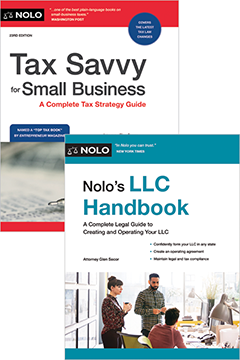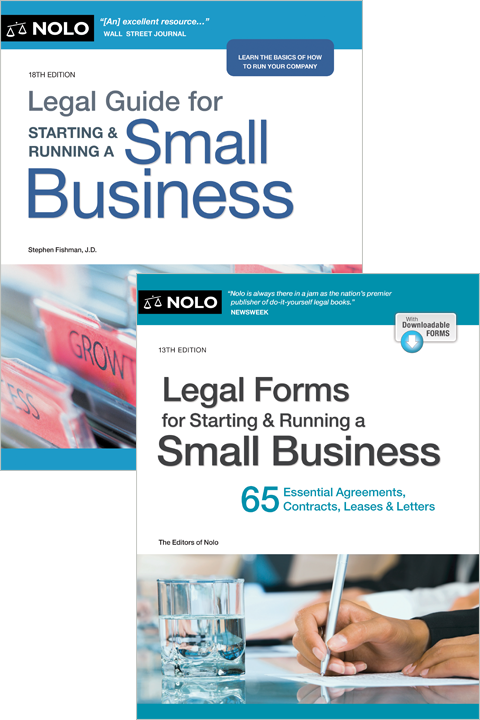If you’re ready to end your partnership in the Empire State, there’s no paperwork required. But you’ll need to take steps to dissolve and wind up your business, including paying debts, distributing assets, and filing final tax returns.
Starting a business is hard and ending it can be just as difficult. Fortunately, you've likely put in a lot of the groundwork—usually by simply following the law—to make closing your business less of a headache. Additionally, partnerships (also known as "general partnerships") usually require less work to start, run, and dissolve than other business structures.
To end your business, you'll need to follow New York partnership laws, your partnership agreement, and best practices. Taking legal steps to close down your business will help limit your liability and give you a clean break.
For more general guidance, see our article on dissolving a partnership to end your liability.
- 1. Review Your Partnership Agreement
- 2. Take a Vote or Action to Dissolve Your New York Partnership
- 3. No State Filing Required to Dissolve Your Partnership in New York
- 4. Pay Debts and Distribute Assets to Wind Up Your New York Partnership
- 5. Notify Creditors, Customers, Clients, and Suppliers
- 6. Pay and File Final Tax Returns With New York
- 7. Cancel and Close Accounts, Licenses, and Permits
- Additional Help With Ending Your New York Partnership
1. Review Your Partnership Agreement
Before you start the process of dissolving your business and winding up its affairs, you need to check your partnership agreement. While a written partnership agreement isn't required in New York, you and your partners probably would've prepared an agreement when you first formed your partnership or at some later point in time. If you never made a partnership agreement, you'll have to abide by the default provisions of New York state partnership law.
The key areas to look for in your partnership agreement's dissolution provisions are:
- under what circumstances a partnership can be dissolved
- which partners are responsible for winding up the business
- how partnership debts should be paid, and
- how assets, if any, should be distributed to the partners.
Continuing the partnership. A well-written partnership agreement will plan for a case where some partners want to leave the partnership but other partners want to stay and continue running the business. In this case, your partnership agreement—or a separate buy-sell agreement—might include a provision where partners can buy out the partnership interests of the partners who want to leave.
Amending the partnership agreement. If situations arise that aren't covered in your partnership agreement, you should figure out how to handle them now. You should put any terms in writing.
2. Take a Vote or Action to Dissolve Your New York Partnership
Typically, partnership agreements will provide ways for the partners to officially dissolve the business. Often times you can dissolve the partnership by vote or by written consent. Your partnership agreement should also specify how many partners are needed to authorize the dissolution, such as:
- a majority of the partners
- two-thirds of the partners, or
- all of the partners.
The threshold you choose might depend on whether there's a vote at a meeting. For example, your agreement might require that the dissolution be approved by two-thirds of the partners if there's a vote at a special meeting. Your agreement might also allow the partnership to be dissolved without a meeting as long as all partners give their written consent. In either case, you should draft a resolution to dissolve the partnership for the partners to consider and take action on.
If you don't have a partnership agreement, you'll have to rely on New York partnership law. The law says that a partnership can be dissolved in a number of ways, including the bankruptcy or death of a partner. But a partnership can also be dissolved by the express will of any partner at any time as long as this method either:
- doesn't violate the partnership agreement, or
- does violate the partnership agreement but the circumstances don't allow dissolution by any other way.
(N.Y. Partnership Law § 62 (2023).)
Usually, a partner can dissolve a partnership by providing written notice of their intent to dissolve to the other partners.
3. No State Filing Required to Dissolve Your Partnership in New York
In New York, general partnerships aren't required to file any paperwork with the Department of State when they dissolve.
4. Pay Debts and Distribute Assets to Wind Up Your New York Partnership
Once your partnership has been dissolved, you'll need to complete some additional tasks to wind up the business, including paying debts and distributing assets to the partners. Before you can pay your debts and distribute assets, you'll need to sell off any property the partnership has, such as real estate, vehicles, equipment, and inventory.
After your partnership has liquidated its assets, you should have money available to pay creditors. New York partnership law has rules for what order people must be paid in when winding up a partnership. In general, the rules are:
- first, outside creditors (who aren't partners) must be paid
- second, creditors who are also partners must be paid
- third, partners are entitled to receive back their capital contributions, and
- if anything remains, the partners are entitled to their shares in distributions.
(N.Y. Partnership Law § 71 (2023).)
For example, suppose Jesminder and Juliette have agreed to dissolve their partnership, Bend It Soccer. The partnership has $100,000 to pay creditors and distribute to its owners. Bend It Soccer owes $50,000 to the bank for a mortgage and $10,000 to Jesminder to cover an equipment loan. To start the business, Jesminder contributed $15,000 and Juliette contributed $5,000. Jesminder and Juliette have agreed to share in the profits equally. Under New York law, the partnership's $100,000 in assets would be distributed in the following order:
- $50,000 to the bank
- $10,000 to Jesminder to cover the equipment loan
- $15,000 to Jesminder and $5,000 to Juliet to cover their initial capital contributions, and
- the remaining $20,000 would be divided evenly between Jesminder and Juliet.
When paying your debts, you should try to negotiate a settlement with your creditors for an amount that's less than what you owe. If you reach an agreement with any creditors, make sure you put the terms in writing.
New York law says that all of the partners are jointly responsible for taking care of the debts. So, if the partnership doesn't have enough money to cover its obligations, the partners will be responsible for coming up with the rest of the cash. (N.Y. Partnership Law § 26 (2023).)
You should also have some agreement with your partners about each partner's responsibility to pay for debts. Your partnership agreement can specify the percentage of debt each partner is responsible for. Typically, the percentage of profits a partner receives is the same as the percentage of debt the partner is responsible for. For example, your partnership agreement might say that Partner A is entitled to 20% of the profits and obligated to pay 20% of the partnership's debt.
5. Notify Creditors, Customers, Clients, and Suppliers
While not legally required, you should reach out to creditors, business associates, customers, and others to let them know that your partnership is dissolved. For any known debts, you should contact those creditors directly by phone, letter, or email.
You can notify unknown creditors and everyone else with:
- an announcement on your website, social media page, or place of business, or
- a notice in a local newspaper.
You should keep copies of these notices.
6. Pay and File Final Tax Returns With New York
New York doesn't require you to receive a tax clearance letter or certificate before dissolving or winding up your partnership.
However, the state's Department of Taxation and Finance (DOTF) does advise you to take care of the following tax matters when closing your partnership:
- file a final Form IT-204, Partnership Return, and make sure to check the "final return" box
- file a final Form NYS-45, Quarterly Combined Withholding, Wage Reporting, and Unemployment Insurance Return if you had employees and have stopped paying wages
- contact the New York State Department of Labor regarding a change in your unemployment insurance
- file a final sales tax return if you're registered for sales tax purposes and destroy your Certificate of Authority, and
- if you have a Certificate of Registration or any other license or certificate, surrender these documents.
For information on filing a final sales tax return, check Tax Bulletin ST-265, which you can find in the guidance section of the DOTF website.
State personal income taxes. General partnerships are considered "pass-through entities," meaning the owners report and pay taxes on their share of the partnership's income. As a partner, you'll need to report and pay taxes on your share of the partnership's income. While you still need to report your partnership earnings, the business itself doesn't need to pay taxes on its income.
Federal income taxes. Your partnership must file IRS Form 1065 and check the "final return" box. Under IRS rules, if your partnership terminates before the end of its normal tax year, the final federal return is due by the 15th day of the third month following the termination date.
7. Cancel and Close Accounts, Licenses, and Permits
If you have anything left belonging to your partnership, make sure you close it out. You should close or cancel the following:
- business bank accounts
- business licenses
- registrations
- permits, and
- fictitious business names (also called "DBAs").
You might be able to sell or transfer some permits and licenses. You should check the transferability of these licenses and permits as you're liquidating partnership assets.
Additional Help With Ending Your New York Partnership
Dissolving and winding up your partnership is only one piece of the process of closing your business. For further, detailed guidance on many of the other steps involved, check out our 20-point checklist for closing a business.
You can probably dissolve and wind up your partnership on your own, especially if you don't have many assets to liquidate or debts to settle. But if you run into issues during the dissolution process, like problems with creditors or disputes among partners, you should talk to a business attorney. An experienced lawyer can walk you through the process and make sure you legally end your obligations and protect your interests.
- 1. Review Your Partnership Agreement
- 2. Take a Vote or Action to Dissolve Your New York Partnership
- 3. No State Filing Required to Dissolve Your Partnership in New York
- 4. Pay Debts and Distribute Assets to Wind Up Your New York Partnership
- 5. Notify Creditors, Customers, Clients, and Suppliers
- 6. Pay and File Final Tax Returns With New York
- 7. Cancel and Close Accounts, Licenses, and Permits
- Additional Help With Ending Your New York Partnership



